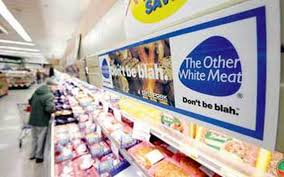(Clive) –– October is recognized as “Pork Month” and many times the state’s pork industry is often taken for granted, or overlooked. Iowa ranks first in the nation with pork production, and its economic impact stretches far beyond the pork producer. Pat McGonegle is the Executive Director with the Iowa Pork Producers Association. In recent years, the state’s pork producers association conducted an economic study about the impact of the pork industry on the state’s economy. McGonegle says that study shows how the pork industry has a ripple effect and touches thousands of people.
McGonegle says those jobs include such positions as a veterinarian, a feed truck driver, extension and outreach specialists, the personnel at the processing facility, the truck drivers that haul the hogs from a farm to a processing facility, and those truck drivers hauling the pork product to a restaurant, supermarket, or grocery store. It also involves the grocery store clerk, and several other positions. The state pork official says the pork industry also contributes to the tax base.
The state pork producers official says hogs are big consumers of Iowa’s grain, both corn and of soybeans, which also benefits Iowa grain farmers.
Consumption of pork products has steadily increased during the past few decades, and according to McGonegle, one bright spot lies with the export of U-S pork products. He says in Iowa alone, nearly one of every four pigs are slated for export.
The pork industry economic impact study not only focused on the entire state, but it also looked at some of the leading major counties of Iowa’s pork production. McGonegle says in both Sioux and Plymouth Counties, which are both among the top four pork producing counties in Iowa. Sioux county shows nearly 4200 direct and indirect jobs related to the pork industry. McGonegle tells of the statistics associated with Plymouth County and its relationship with the pork industry.
McGonegle says whether the pork industry continues to expand within the state will depend on input costs, such as higher grain prices, and higher costs for building materials.
















